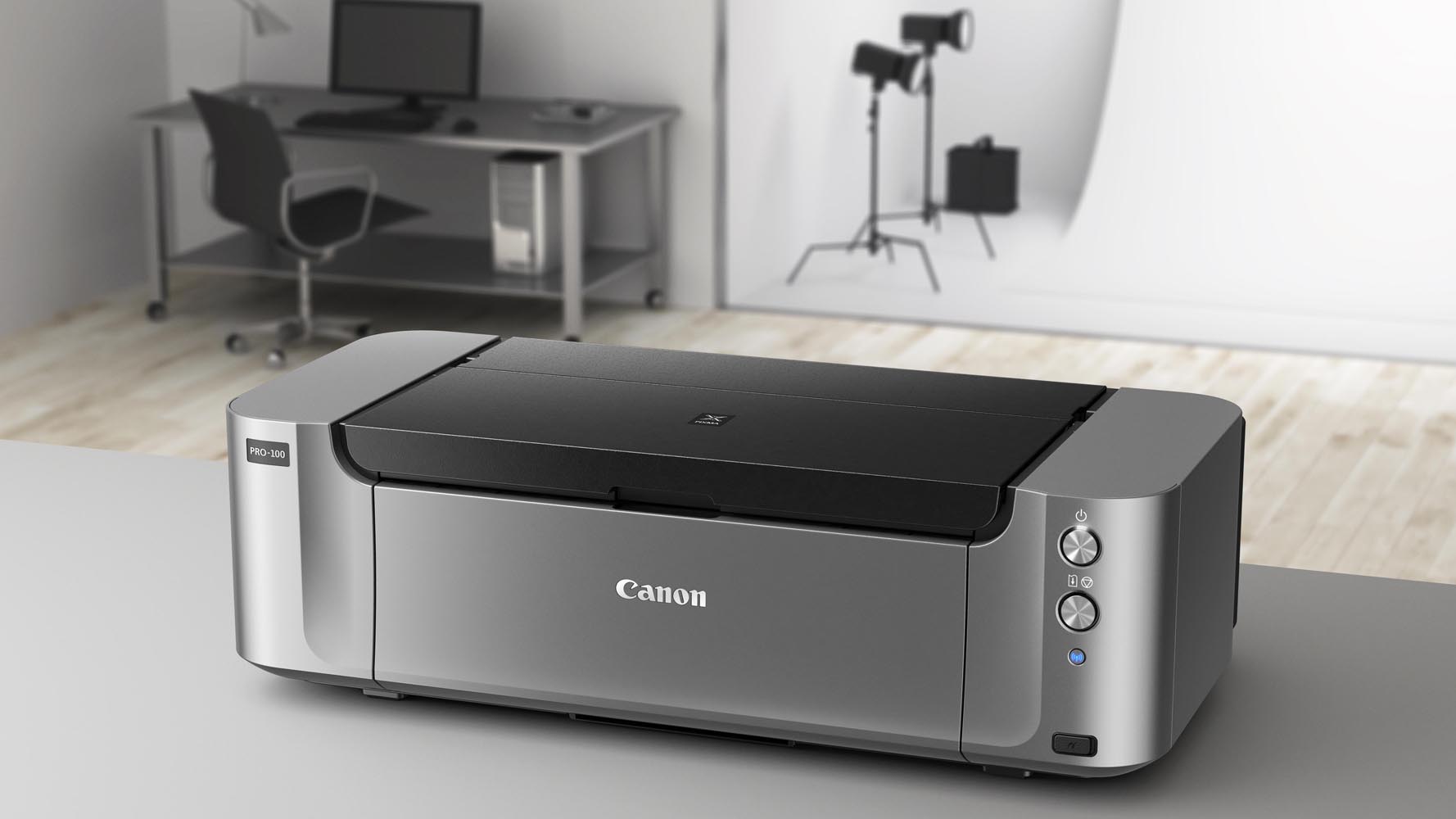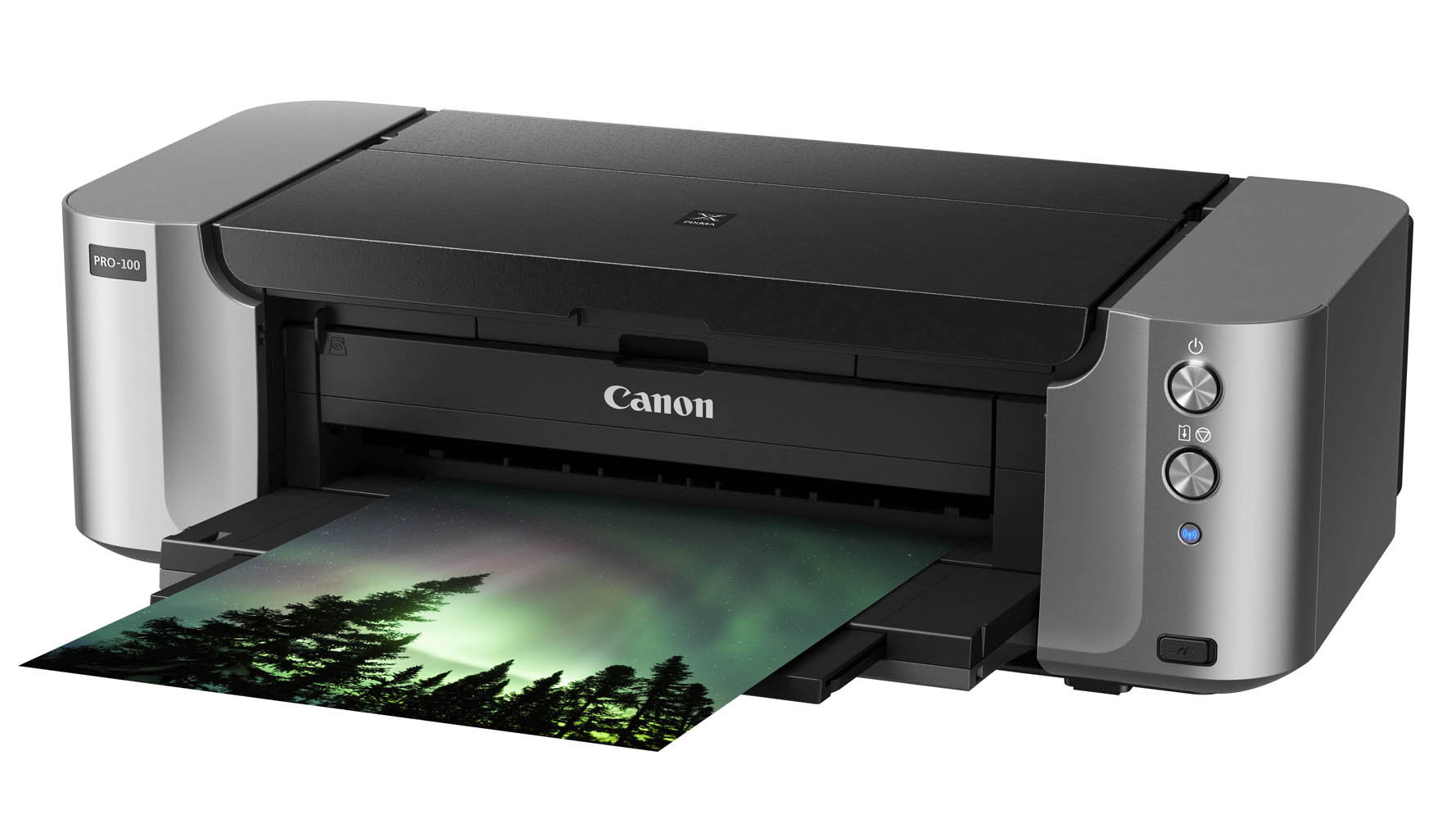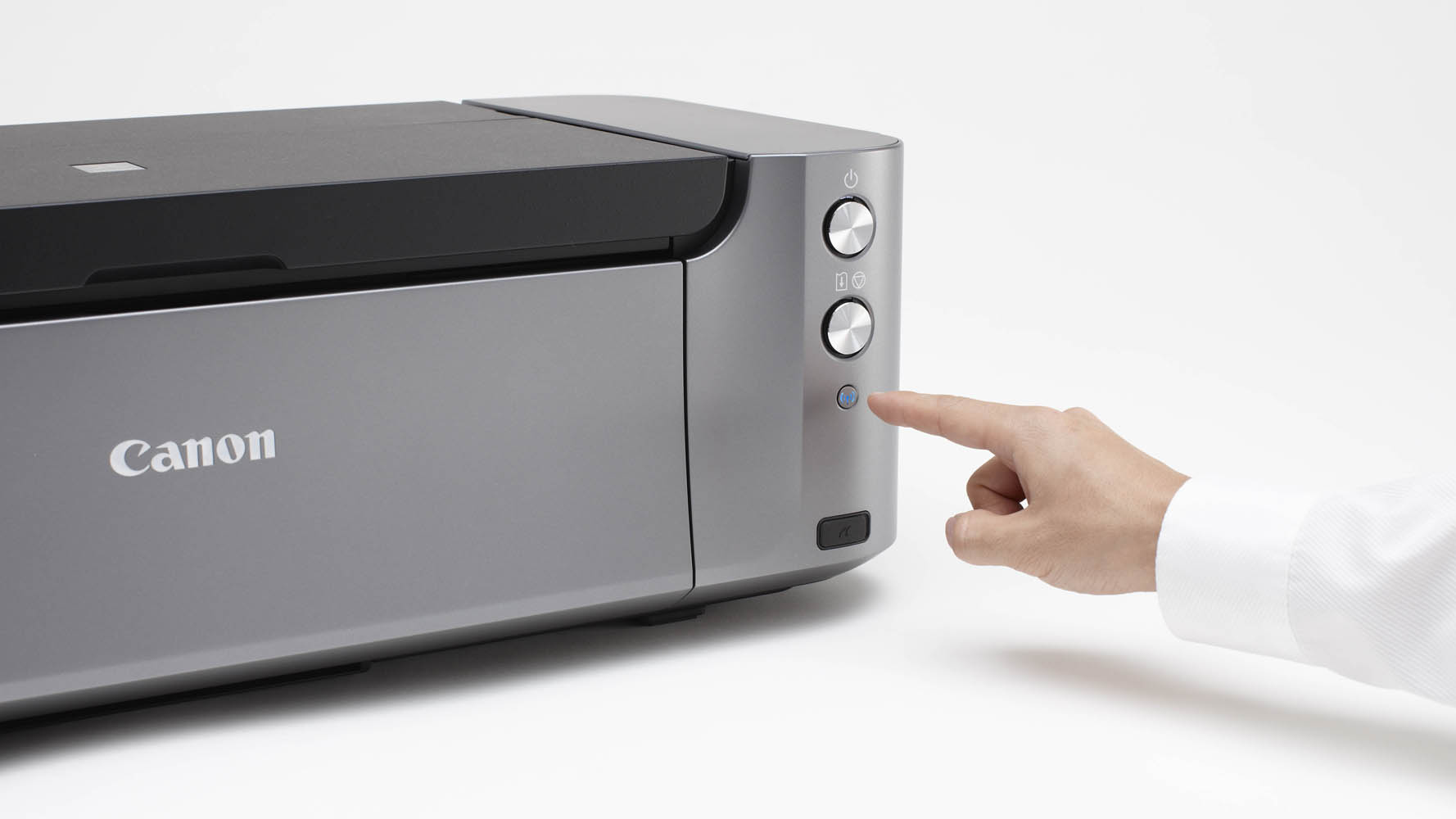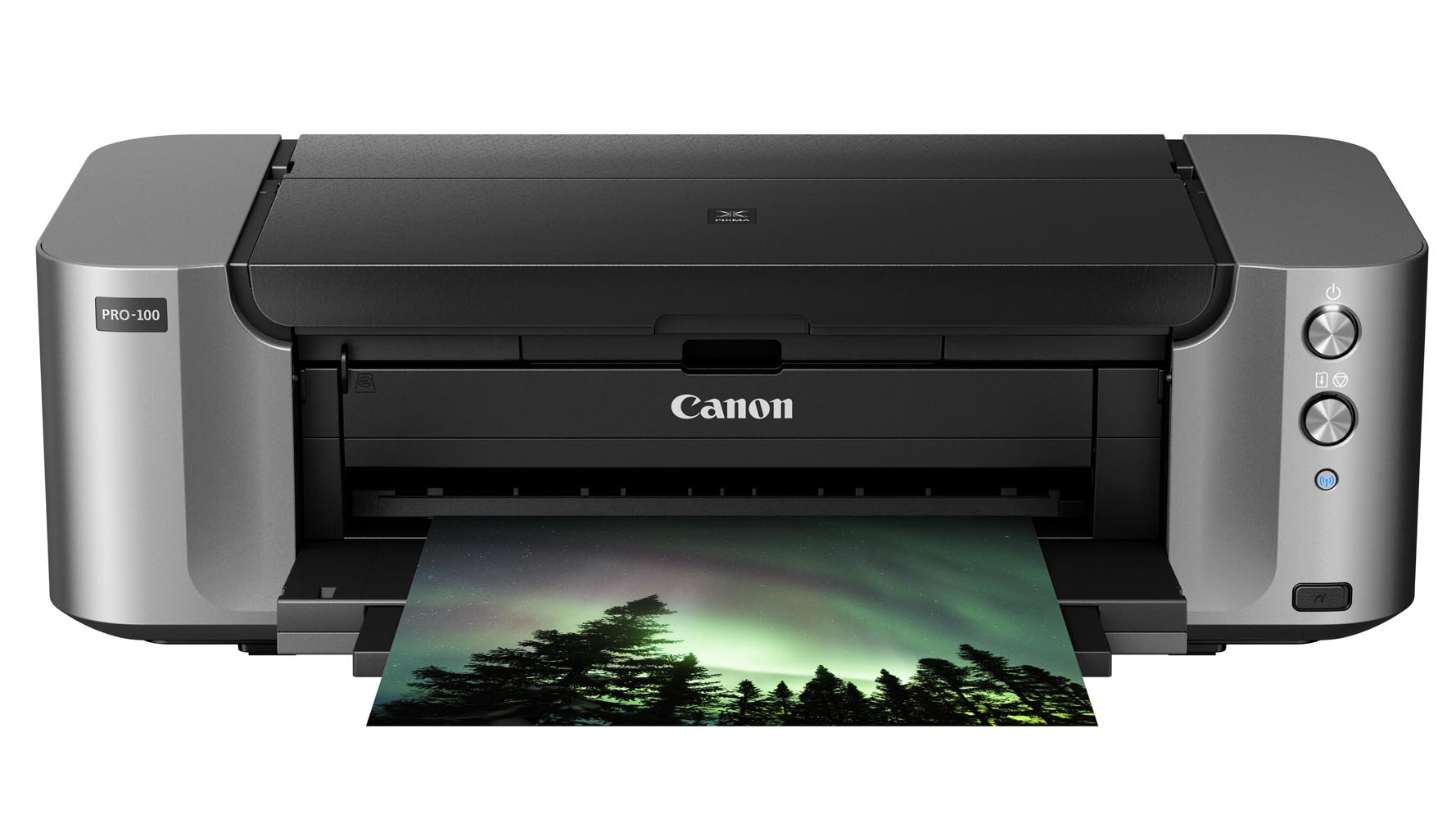TechRadar Verdict
Canon Pixma Pro-100's real trump card is its price, much lower than the Canon Pixma Pro-1. Considering the print quality of the two is so close, it's difficult to justify spending the extra unless you need faster print times or often use matt paper.
Pros
- +
Excellent colour and mono prints
- +
Relatively fast
- +
Substantial build quality
- +
Competitive price
Cons
- -
Uninspiring quality on matt media
- -
Comparatively high cost of ink
- -
Dye-based inks less resilient
Why you can trust TechRadar
Photokina 2012 saw the launch of the A3+ Canon Pixma Pro-100, set to replace the Canon Pixma Pro9000 Mark II.
The Canon Pixma Pro-100 sits under the Canon Pixma Pro-10 and Canon Pixma Pro-1 in the company's A3+ (13 x 19 inches) photo printer hierarchy, promising exceptional image quality at a more accessible price.
One of the biggest differences between the Canon Pixma Pro-1 and the Canon Pixma Pro-100 is that the new model uses eight inks rather than twelve.

With half the number of nozzles (6,144 rather than 12,288) the Canon Pixma Pro-100's print head may seem less impressive than the Pro-1's, but it has a smaller minimum droplet size of 3pl (rather than 4pl) which should mean it is capable of reproducing finer detail.
Print resolution equals that of the Canon Pixma Pro-1 at 4800 x 2400 dpi, but unlike its pricier sibling you do get the addition of Wi-Fi connectivity. Consequently, printing is now possible via USB 2.0 or Ethernet connections, or wirelessly from iOS and Android devices, using Canon's mobile printing app.
Whereas the Canon Pixma Pro-1 is equipped with Canon's Lucia pigment inks, the Canon Pixma Pro-100 uses theoretically inferior dye-based cartridges. These tend to be more prone to fading than a pigment system. However, stick with genuine ChromaLife100+ ink and Canon papers and prints should still last decades when framed, or over 100 years in an album.

Dye-based inks do have their advantages though, usually providing a higher gloss finish than pigment inks. Therefore, unlike the Canon Pixma Pro-1, the Canon Pixma Pro-100 can do without a gloss-boosting 'Chroma Optimizer' cartridge.
Build and handling
Canon's latest high-end A3+ (13 x 19 inches) printer may be expensive - priced at £469/US499 (around AU$729) - but when you come to handle a Canon Pixma Pro-100, at least it feels like a quality product. Fit and finish are first class, with reassuringly solid paper input and output trays and large, robust controls.
This does all add up to one hefty piece of kit, though. Out of the box dimensions of 689 x 385 x 215mm (27.13 x 15.16 x 8.46 inches) are pretty large, but extend the paper trays and the sprawling contraption that emerges demands some serious desktop real estate.

But that's assuming you've managed to lift the beast on to your desk in the first place, given that this beefy build quality makes the Canon Pro-100 weigh in at just shy of 19.7kg (43.43lbs). Still, it could be worse, as the Canon Pixma Pro-1's 27.7kg (61.07lbs) is even more likely to result in a trip to the osteopath.
A3+ printers have an insatiable appetite for ink, hence why Canon saw fit to equip its top-end Canon Pixma Pro-1 with high-capacity 36ml (1.22 fl oz) ink tanks. The Canon Pixma Pro-100 doesn't fare so well, having to make do with 13ml (0.44 fl oz) cartridges, similar to those in the old Canon Pixma Pro9000 Mark II that it replaces.
Predictably, the cost per ml increases in line with this reduced capacity. At list price, the Canon Pixma Pro-100 ink works out at £0.98/US$1.30 per ml, while the big Canon Pixma Pro-1 tanks come in 15% cheaper, at £0.83/US$0.99 per ml. It makes even the relatively pricey £0.93 per ml for Epson's R3000 ink a better deal.

It's not all bad news though. The Canon Pixma Pro-100 'only' requires a mere eight cartridges (compared to the Canon Pixma Pro-1's dozen) so a complete set will set you back £102/US$136, rather than the daunting £360/US$432 to fully refill a Canon Pixma Pro-1 at Canon's full retail price.
Shop around and many retailers also offer an eight cartridge multipack for even less.
